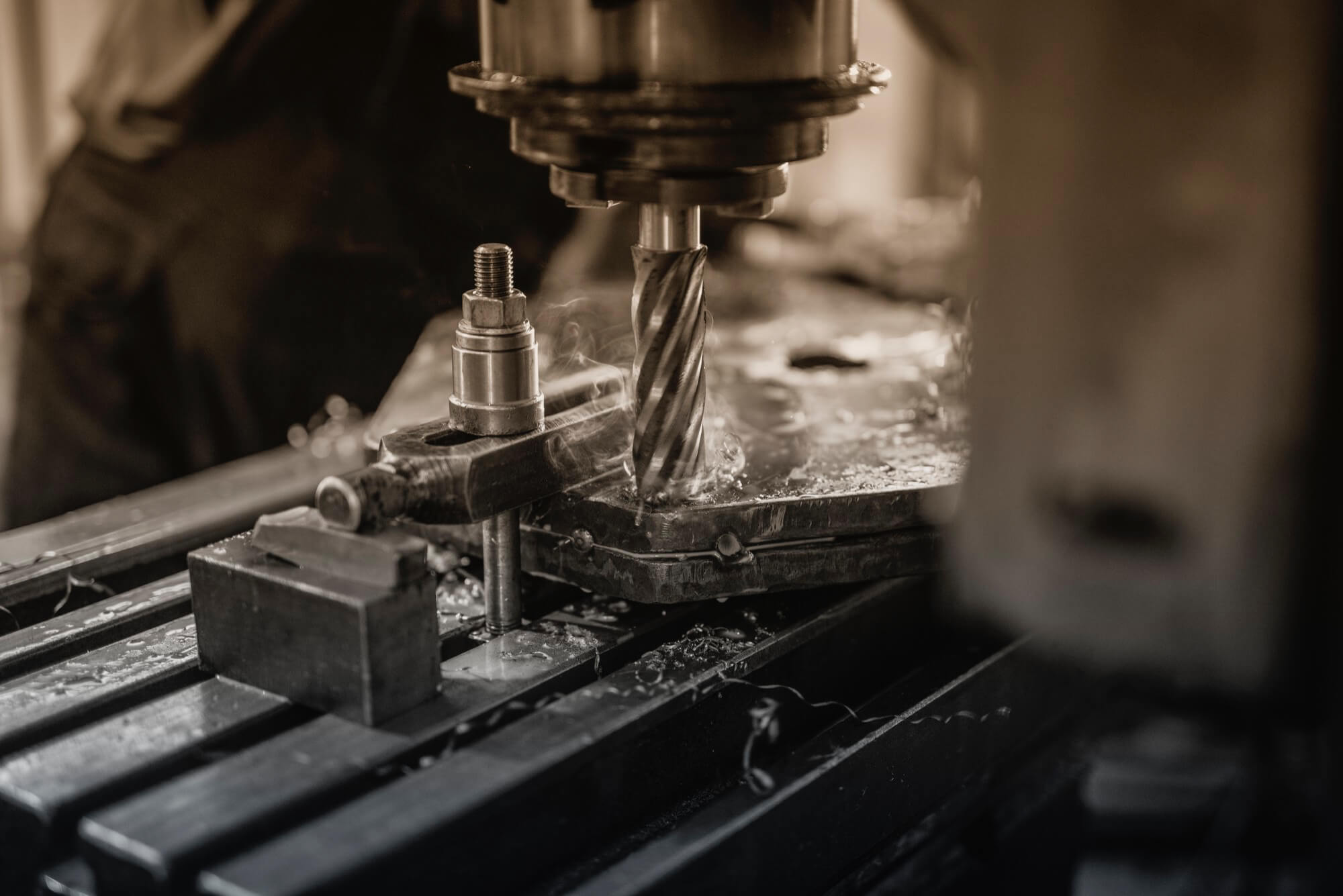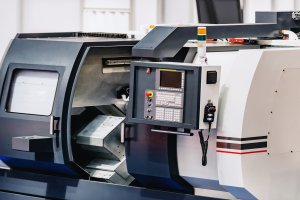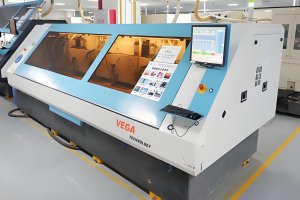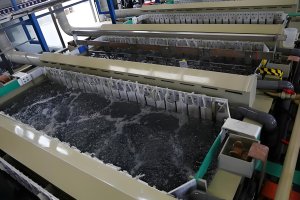Introduction
Reaming might not be the most glamorous topic in the world of CNC machining, but it’s an essential process that can make or break the quality of your parts. Imagine you’re building a high-precision engine, and every tiny hole must be perfect. That’s where reaming steps in, taking an already drilled hole and making it smoother, more precise, and just the right size. Let’s dive into the nitty-gritty of reaming operations in CNC machining and discover how to optimize this crucial process.
What is Reaming?
Reaming is like fine-tuning a hole. While drilling creates the initial hole, reaming expands it to a precise diameter and improves its surface finish. There are two main types of reamers: cylindrical and tapered. Reamers can have different numbers of helical flutes and are made from various materials, including high-speed steel, cobalt alloys, and carbide tips.
Design of Reamers
Reamers come in various designs, each with its advantages and disadvantages. For instance, carbide reamers are highly durable and wear-resistant, but they might not be the most economical choice for every hole. On the other hand, high-speed steel reamers are more cost-effective and versatile.
Two main design features of reamers are directly relevant to CNC machining and programming:
- Helical Flutes: Most reamers have left-hand helical flutes. This design is ideal for through-holes as it pushes chips forward into the open space during cutting. However, it’s not suitable for blind holes.
- Chamfered Cutting Edges: The chamfer at the tip of the reamer helps it enter a hole that lacks a chamfer, making it easier to guide. Some reamers have a tapered cutting edge, known as a “lead angle” or “chamfer angle,” which aids in smoother entry into the hole.
Spindle Speed for Reaming
Choosing the right spindle speed is crucial. It’s influenced by the material being machined, the rigidity of the setup, and the desired surface finish. Typically, the spindle speed for reaming is about two-thirds of the speed used for drilling the same material. For example, if the drilling speed is 500 rpm, the reaming speed should be around 330 rpm:

Feed Rate for Reaming
The feed rate for reaming is generally higher than for drilling, usually about 2 to 3 times the drilling feed rate. This higher feed rate ensures that the reamer cuts the material rather than just rubbing against it. A too-low feed rate can cause rapid wear on the reamer, while a too-high rate increases cutting pressure and risks damaging the reamer.
Allowances for Reaming
The allowance for reaming, or the amount of material left after pre-drilling or boring, is critical. If the allowance is too small, the reamer may wear out quickly. If too large, it increases cutting pressure and risks damaging the tool. A common rule of thumb is to leave about 3% of the reamer’s diameter as allowance. For example, for a 0.375-inch reamer, the pre-drilled hole should be about 0.364 inches in diameter:

Other Considerations
Reaming operations, like other machining processes, benefit from using coolant to improve surface finish and aid in chip removal. Although reaming doesn’t generate much heat, standard coolant helps maintain a good surface quality.
When reaming blind holes, it’s essential to first drill and then ream, but be mindful of chips left in the hole from drilling. These chips can interfere with reaming, so it’s a good idea to pause and clean out the chips before proceeding with reaming. This can be achieved by using an M00 stop in the program, allowing the operator to remove any debris.
Programming Tips
Reaming requires careful consideration in CNC programming. The right fixed cycle can make a significant difference. For example, using the G85 cycle on Fanuc controllers ensures a smooth feed in and out of the hole without pausing at the bottom, which is ideal for reaming. If a pause is necessary at the bottom of the hole, G89 can be used. Both cycles ensure that the feed rate for entering and exiting the hole remains consistent, crucial for maintaining quality.
Practical Example: Data Table
Here’s a data table that showcases different spindle speeds and feed rates for various materials:
| Material | Drilling Speed (rpm) | Reaming Speed (rpm) | Drilling Feed Rate (in/min) | Reaming Feed Rate (in/min) |
|---|---|---|---|---|
| Aluminum | 1200 | 800 | 0.008 | 0.016 |
| Mild Steel | 500 | 330 | 0.006 | 0.012 |
| Stainless Steel | 300 | 200 | 0.005 | 0.010 |
| Titanium | 250 | 165 | 0.004 | 0.008 |
Conclusion
Reaming is a critical process in CNC machining, ensuring that holes are precise and have an excellent surface finish. By understanding the design of reamers, selecting the appropriate spindle speed and feed rate, and considering the allowance and coolant, machinists can optimize their reaming operations. Whether you’re working with aluminum, steel, or more exotic materials, these techniques will help you achieve the best results in your CNC machining projects.
Other Articles You Might Enjoy
- Requirements for CNC Machining Parts
Preparation Work Complete the necessary preparation before machining, including process analysis, process route design, tool and fixture selection, and program compilation. online cnc machining service Operating Steps and Contents Start…
- Innovative CNC Machining for Advanced Wearable Technology
Innovative CNC Machining for Advanced Wearable Technology The advent of Computer Numerical Control (CNC) machining and wearable technology has transformed various industries, including healthcare, fitness, fashion, and defense. CNC machining…
- Maximizing Precision in CNC Machining: Techniques and Tips
Importance of Precision in CNC Machining Precision is an fundamental component in the field of Computer Numerical Control (CNC) machining. It entails producing parts that are not only accurate but…
- Custom CNC Machining for High-Tech Security Systems
Introduction to CNC Machining for High-Tech Security Systems Custom Computer Numerical Control (CNC) machining plays an integral role in the production of high tech security systems. It is a manufacturing…
- What are the requirements for CNC machining of bearing parts?
Bearings are common and important parts in the automotive industry, which can support transmission components and transmit torque. Generally, CNC machining centers are used to process bearing parts. So what…
- Precision CNC Machining of Steel: High-Volume Production
Precision CNC Machining and High-Volume Production As an integral part of modern manufacturing processes, Precision Computer Numerical Control (CNC) machining brings about unmatched accuracy and consistency in the production of…






